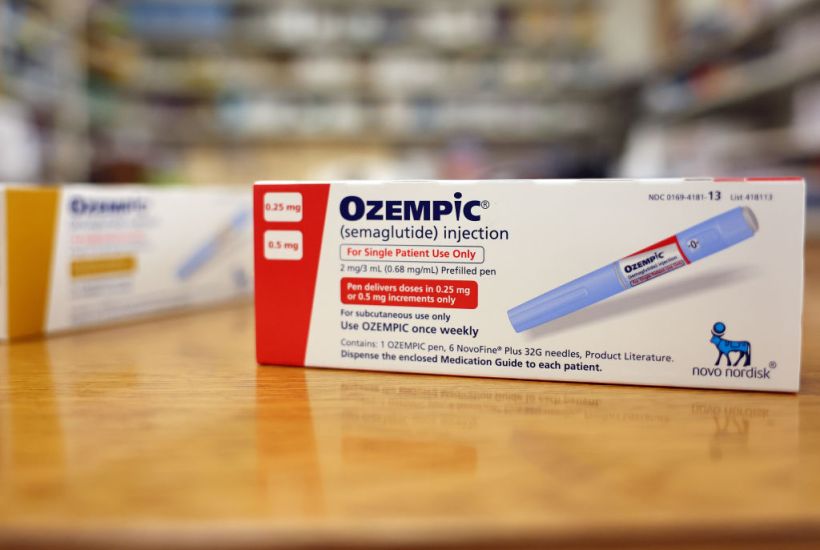Sixty years ago, my biology teacher told me (so it must have been true) that after the war, some Americans were so delighted that the restrictions on food had been lifted that they ate capsules containing a tape worm so that they could eat to their heart’s content without getting fat. This, of course, revolted me, as it was intended to. I never forgot what she said.
Twenty years later, I was to see the future of the world, at least as far as obesity and type-II diabetes were concerned, on the island of Nauru. There, the inhabitants had suddenly become very rich, thanks to the mining of phosphate rock, and went from a strenuous subsistence to wealthy indolence in a matter of years. With nothing much else to do, they ate and drank enormously, grew fat, suffered from diabetes and died early.
This was the fate of much of the western world, give or take the indolence, especially, though not exclusively, in the English-speaking part of it. No doubt the relatively reduced culinary tradition of the English-speaking world made it susceptible to obesity because quantity had long been a substitute for quality where food was concerned. There has been a peculiar historical reversal also: where once an embonpoint was a manifestation of wealth, obesity became, at least statistically, a marker of poverty.
Inside every fat person, then, there really is a thin person trying to get out
It is said that a quarter of the British population is now obese, with a Body Mass Index (weight in kilos divided by height in metres squared) of 30 or more. Obesity is not only unsightly, except, perhaps, for those who like Rubens, but bad for the health. It brings in its train all manner of disadvantages such as an increased susceptibility to cancer, obstructive sleep apnoea, and Covid, but above all type-II diabetes. Obesity is now so prevalent that it might one day reverse the increase in life expectancy that we had long supposed to be all but a law of nature.
There has also long been a kind of culture war over the nature of obesity. In the blue corner, as it were, are those who see obesity as the wages of sin, that of gluttony in particular. In the red corner are those who see obesity as straightforwardly an illness, brought on by such factors as genetic endowment, commercial pressure to overeat, cheap food full of sugar and fat, and so forth, all beyond the power of individuals to control. There has been a general shift towards the red corner: when I was young, everyone was in the blue corner, like the gym master who told a fat boy who was struggling to lever himself over a horse that there were no fat people in Belsen. This might have been true, but it was not in the best of taste to have said so; and even if the fat boy were fat because he ate too much – well, which of us is in a position to cast the first cream cake?
Most of us stand, or fight, somewhere between the two corners now. NICE (the National Institute for Health and Care Excellence) seems by its language in its report about the anti-obesity drug, semaglutide (Ozempic), to veer towards the red corner, for it describes the fat as people living with overweight or living with obesity, more or less as I live with my wife. Inside every fat person, then, there really is a thin person trying to get out, that is to say the real him. His obesity is adventitious, an unwelcome stranger, like a tumour.
In recommending weekly injections of semaglutide (about £18 each) in persons whose BMI is 35 or over – that is to say the very obese – and with a secondary complication of obesity, especially type-II diabetes, NICE is careful not to imply that no other treatment, such as advice as to diet and exercise, is necessary in addition, or that semaglutide is a complete solution to the problem of obesity in our society, if for no other reason that, for the government to give the drug to every obese person in Britain would cost around £15 billion a year. Even allowing for the debasement of our currency, and deducting the savings made by a reduction in the need to treat type-II diabetes, that is quite a lot of money.
When the patent runs out, of course, the price will plummet, but other, even more effective drugs are said to be under development, that will be likewise expensive to begin with. But can it be very long before someone advocates the use of semaglutide prophylactically, in childhood? It is an appetite suppressant and it will prevent them getting fat. Is not prevention better than cure? At least a quarter of children in Britain are now obese: think of the misery and ill-health that could be forestalled by only one injection a week!
Demand for semaglutide in the private sector is bound also to rise, and woe betide any private doctor who refuses to prescribe it for his well-off patients living with obesity who can afford to pay for it themselves – unless or until its long-term use is shown to have deleterious effects. Then the patients will turn on their doctors with the full force of their tort lawyers; they will even say that their doctor did not sufficiently warn them of the one possible serious side-effect so far associated with the drug, acute pancreatitis, a dangerous and unpleasant condition. If, as so far seems unlikely, other serious side-effects come to light in the course of the years to come, the doctors or the drug company, or both, will be sued for lack of foresight.
What of the cultural effects of a drug for obesity? In my childhood, my mother had a book by a man called Gayelord Hauser titled Eat and Grow Beautiful. Perhaps someone will soon write a book, thanks to semaglutide, titled Eat Now, Slim Later. Living with overweight, after all, is a treatable condition.
Got something to add? Join the discussion and comment below.
Get 10 issues for just $10
Subscribe to The Spectator Australia today for the next 10 magazine issues, plus full online access, for just $10.





















Comments
Don't miss out
Join the conversation with other Spectator Australia readers. Subscribe to leave a comment.
SUBSCRIBEAlready a subscriber? Log in